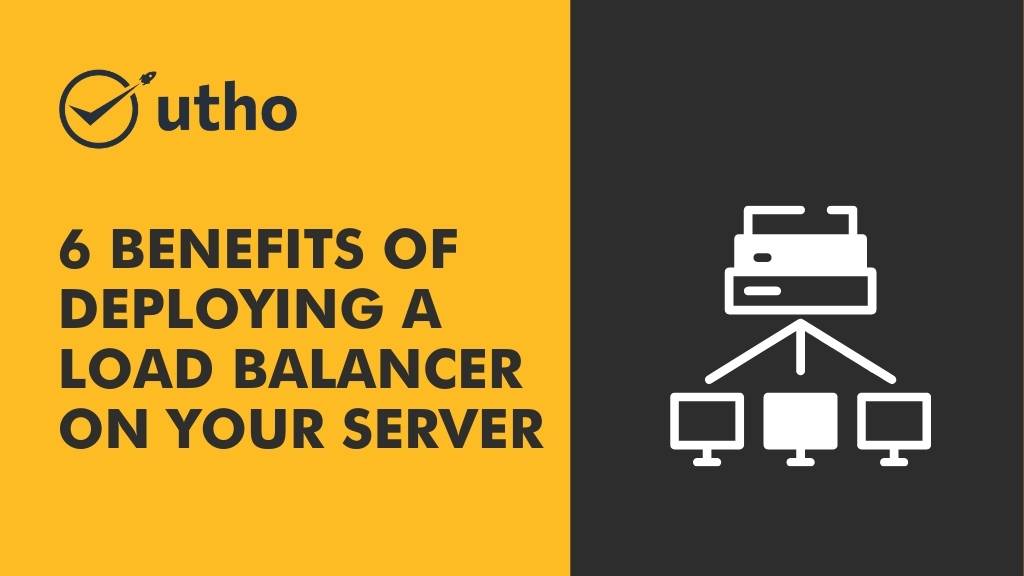In today's fast-changing tech world, software must be agile and scalable. This need has led to microservices architecture. This approach is popular with developers and enterprises. It can break complex apps into smaller, manageable services. Microservices are better than traditional monolithic architecture. They allow for faster development, easier scaling, and a more resilient system. But what exactly are microservices, and how does this architecture work? This article will explore microservices, their benefits, and how to use them. It will use real-world examples and practical insights.
Understanding Microservices: What Are They?
Microservices, or microservices architecture, is a design pattern. It structures an app as a collection of loosely coupled services. Each service handles a specific business function. It can be developed, deployed, and scaled independently. Unlike monolithic apps, where all parts are connected, microservices use APIs to communicate. This makes the system more modular and adaptable.
In an e-commerce app, user authentication, the product catalog, order processing, and payment processing can be separate microservices. Each service has its own database, logic, and UI. This allows for updating or scaling one service without affecting the others.
Importance of Microservices in Modern Development
The rise of cloud computing, DevOps, and CI/CD has made microservices architecture more relevant. Here’s why it is important:
- Scalability: Microservices let you scale components independently. This improves resource use and performance.
- Flexibility in Technology: Different microservices can use different technologies. This lets teams choose the best tools for each service.
- Faster Development and Deployment: Teams can work on separate microservices at the same time. This speeds up development and allows for continuous deployment.
- Resilience: The isolation of services means that if one fails, the app won't crash. This enhances system reliability.
A 2024 survey by the Cloud Native Computing Foundation (CNCF) found that over 70% of organizations have adopted micro services architecture as a key part of their cloud strategies. This shift reflects a growing need for speed in software delivery. This is especially true in e-commerce, finance, and telecom.
How Microservices Architecture Works
Microservices architecture breaks an app into smaller, independent services. They communicate using lightweight protocols like REST APIs or messaging queues. Let’s delve deeper into the core components of micro services architecture:
1. API Gateway
What Is It? An API gateway acts as a single entry point for all client requests in a micro services architecture. It routes incoming traffic to the right microservices. It aggregates responses and handles security, load balancing, and rate limiting.
How to Implement:
- Use open-source tools like Kong, Traefik, or NGINX to set up an API gateway that can route requests and manage traffic between services.
- Configure authentication and authorization protocols such as OAuth2 to secure API access.
- Integrate the API gateway with load balancing mechanisms to ensure smooth traffic distribution.
- Why It’s Important: An API gateway simplifies client-service communication. It hides the complexity of service interactions. It is a critical component in micro services architecture, ensuring that clients don’t need to manage multiple endpoints.
Best For:
- Large-Scale Applications: Ideal for complex applications with multiple services and high traffic.
- Secure Data Handling: Suitable for businesses that need to manage secure transactions and user data.
2. Service Discovery
What Is It? Service discovery enables automatic detection of services within a micro services architecture. It helps microservices find each other without manual work. This makes it easier to manage dynamic environments where services are often added or removed.
How to Implement:
- Use tools like Consul, Eureka, or Kubernetes to register and discover services dynamically.
- Configure health checks to ensure that only healthy instances of a service are discoverable.
- Integrate service discovery with load balancers. This will route requests to the right service instances.
- Why It’s Important: Service discovery is vital for the scalability and resilience of micro services architecture. It allows services to find and communicate with each other, despite changes in the environment. It does this without using hard-coded endpoints.
Best For:
- Dynamic Environments: Ideal for cloud-native applications where services scale up and down automatically.
- Microservices on Kubernetes: They work well in containerized environments. Services are often created and terminated.
3. Containers and Orchestration
What Is It? Containers package a microservice and its dependencies. They ensure it runs the same in different environments. Tools like Kubernetes manage container deployment, scaling, and operation in a microservices architecture. They're called container orchestration tools.
How to Implement:
- Use Docker to containerize microservices, ensuring that each service can run in isolation.
- Use Kubernetes to deploy and manage these containers. It automates scaling, load balancing, and failover.
- Integrate Helm charts to simplify the deployment of complex microservices setups on Kubernetes.
- Why It’s Important: Containers make microservices portable and lightweight. They can run anywhere, from local environments to cloud platforms. Orchestration tools make it easier to manage these services. They help scale and manage micro services architectures.
Best For:
- Cloud-Native Applications: Ideal for applications that need to run on multiple cloud platforms.
- High Availability Applications: They keep services running despite some instance failures.
4. Event-Driven Architecture
What Is It? Event-driven architecture is a type of microservices. In it, services communicate through events. They react to changes or actions. It decouples services. They can interact without direct API calls. This improves system responsiveness.
How to Implement:
- Use message brokers like Apache Kafka, RabbitMQ, or AWS SNS/SQS to publish and subscribe to events.
- Design microservices to react to events asynchronously. They should process them without blocking operations.
- Use event sourcing and CQRS to separate read and write models.
- Why It’s Important: Event-driven architecture enables real-time data processing. It also improves microservices by decoupling their services. It is particularly useful for systems that require real-time data updates or complex workflows.
Best For:
- Financial Services: Ideal for applications that need to process transactions in real-time.
- E-commerce Platforms: They are good for managing events, like order processing, inventory updates, and user notifications.
5. Circuit Breaker Pattern
What Is It? The circuit breaker pattern is a design strategy in microservices. It prevents a service from making repeated failed requests to another service. It acts like an electrical circuit breaker. It "trips" when a failure threshold is reached. This stops further requests temporarily.
How to Implement:
- Use libraries like Hystrix (now succeeded by resilience4j) in Java apps to implement circuit breakers.
- Define failure thresholds and timeouts to control when the circuit should trip.
- Integrate the circuit breaker with monitoring tools. Track failure rates and ensure timely responses.
- Why It’s Important: The circuit breaker pattern boosts the stability of microservices. It prevents cascading failures and improves resilience. It isolates faulty services, allowing the rest of the system to function without degradation.
Best For:
- High-Traffic APIs: Useful in apps with many API calls. Downstream service failures can hurt performance.
- Resilient Systems: Best for critical systems, like banking and healthcare. Uptime and reliability are vital.
6. Centralized Logging and Monitoring
What Is It? Centralized logging and monitoring show the performance and health of services in a micro services architecture. Aggregating logs and metrics from all services helps teams. They can quickly identify issues and understand system behavior.
How to Implement:
- Use open-source tools like the ELK Stack. It includes Elasticsearch, Logstash, and Kibana. They can aggregate and visualize logs from multiple services.
- Use distributed tracing tools like Jaeger or Zipkin. They track requests as they move through different micro services.
- Integrate monitoring solutions like Prometheus and Grafana for real-time metrics and alerts.
- Importance: Centralized logging and monitoring provide a full view of how services interact. They help troubleshoot issues faster. This is crucial in microservices. Debugging issues can be hard due to distributed components.
Best For:
- Applications with Complex Workflows: They help trace performance issues in environments with multiple, interacting services.
- DevOps Teams: Essential for maintaining system health and optimizing resource usage.
7. Data Management and Decentralized Databases
What Is It? In micro services architecture, each microservice typically manages its own database. This pattern, called decentralized data management, keeps services loosely coupled. It allows them to scale independently.
How to Implement:
- Use NoSQL databases like MongoDB for services that require flexibility in data models.
- Implement relational databases like PostgreSQL where data consistency is critical.
- Use data sync and messaging queues, like Kafka. They ensure data consistency between services without tight coupling.
- Importance: Decentralized data management lets microservices run independently. It reduces the risk of a single point of failure. This microservices architecture is good for apps needing high scalability and flexible data models.
Best For:
- E-commerce and Marketplaces: Services like inventory, user data, and payment processing can use different databases. This optimizes for each use case.
- Enterprises with Varied Data Needs: Ideal for large firms with services that need different database types and models.
8. Security Best Practices for Microservices
What Is It? Securing a micro services architecture requires three things. First, implement authentication. Second, use authorization. Third, encrypt communication between services. This ensures data integrity and protects against attacks.
How to Implement:
- Use OAuth2 and OpenID Connect for user authentication and access control between services.
- Implement mTLS (mutual TLS) for encrypting communication between microservices.
- Use API gateways to enforce security policies like rate limiting, IP whitelisting, and input validation.
- Why It’s Important: Security is critical in micro services architecture due to the distributed nature of the system. Each service interaction can be a vulnerability. So, we must have strong security practices.
Best For:
- Financial Services: Services that handle sensitive transactions require strong authentication and encryption.
- Healthcare Apps: Apps that manage patient data must follow strict data privacy rules. So, security is a top priority.
9. Testing Strategies for Microservices
What Is It? Testing in microservices architecture involves different tests. They are unit, integration, and end-to-end tests. The goal is to ensure each service functions correctly on its own and within the overall system.
How to Implement:
- Use unit testing frameworks like JUnit for testing individual components of a microservice.
- Use contract testing tools like Pact. They ensure services follow agreed protocols in their interactions.
- Use tools like Postman or RestAssured for API testing. They verify that each service responds correctly to requests.
- Why It’s Important: Testing ensures that services work correctly, both in isolation and when integrated. This is essential in micro services architecture, where a failure in one service can impact others. Thorough testing helps identify issues early and reduces the risk of system-wide failures.
Best For:
- Agile Teams: Frequent testing helps agile teams deploy updates with confidence. It ensures that new changes don't break existing functionality.
- Complex Service Interactions: Useful where multiple services must closely interact and keep data consistent.
10. DevOps and CI/CD Integration
What Is It? It's essential to integrate DevOps and CI/CD. It automates microservices deployment. This method automates building, testing, and deploying code changes into a microservices environment. It makes the process faster and more reliable.
How to Implement:
- Use CI/CD tools like Jenkins, GitLab CI, or CircleCI to automate the build and deployment of microservices.
- Integrate testing frameworks to run unit and API tests in CI. This will validate each service before deployment.
- Use blue-green or canary deployments to release new microservice versions. This will minimize the risk of disruptions in production.
- Why It’s Important: CI/CD integration is vital in microservices. It enables continuous updates and improvements without manual work. Automating deployment can speed up new feature releases. It also keeps services up-to-date.
Best For:
- Agile Development Teams: Teams that often iterate on features benefit from CI/CD's ability to automate deployments.
- Large-Scale Microservices Deployments: For firms with many microservices, CI/CD helps. It ensures consistency and cuts deployment errors.
Utho's Role: Utho is a developer-friendly cloud platform. It supports the integration of CI/CD pipelines with popular tools like Jenkins and GitLab. This helps developers streamline their deployments. It makes it easier to manage complex cloud microservices. Utho's support for flexible deployment makes it ideal for teams using CI/CD in their microservices.
Building Resilient Systems with Microservices Architecture
Microservices architecture is a great way to design apps. It makes them scalable, flexible, and easier to maintain. Dividing large monolithic systems into smaller, deployable services makes businesses more agile and resilient. Key components ensure that services communicate and stay stable as new features are deployed. They are: API gateways, service discovery, container orchestration, and automated testing.
For organizations looking to adopt or improve their microservices, it's vital to choose the right tools and practices. Each practice helps make a cloud environment more robust and efficient. They manage service interactions with API gateways and automate deployments with CI/CD.
A reliable cloud platform can make a big difference in implementing these solutions. Utho supports open-source tech and integrates with DevOps tools. It provides a secure, scalable base for deploying microservices. Utho lets dev teams focus on building new solutions. They won't worry about the complex infrastructure.
With the right tools and a cloud platform like Utho, businesses can harness micro services. They can deliver continuous value to customers while ensuring high performance and security.




